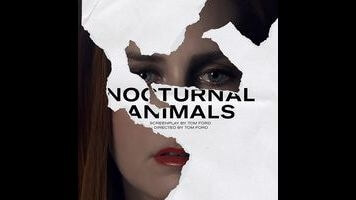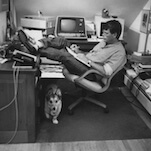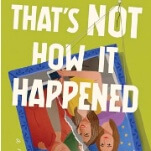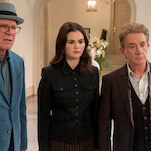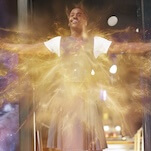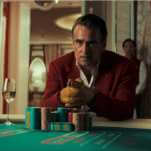Ford, who also wrote the screenplay, teases and insinuates the similarities between these narratives in largely visual terms. Amy Adams plays the gallery owner, Susan, whose reading of the manuscript (also called Nocturnal Animals) is implied through casting: The protagonist, Tony, is played by Jake Gyllenhaal, who also plays Susan’s ex-husband, Edward, the author of the novel; his wife by Isla Fisher, who looks like Adams from the right angles; their daughter by Ellie Bamber, who bears a passing resemblance to India Menuez, who plays the college-age daughter of Susan and her second husband, Hutton (Armie Hammer). Everything here belongs in scare quotes, because the characters and events that the viewer is led to presume inspired Tony’s Cormac McCarthy-esque tale of backcountry evil and self-destructive retribution are introduced with a delay, implying that the flashback narrative (which starts later in the film and plays out from Susan’s point of view) is itself colored by the fictional story.
These are framing devices for other framing devices; the already heightened level of suggestion is complicated by the Neon Demon-esque artificiality of the Los Angeles-set portions, and the fact that the most fascinating and ambiguous character in this triple-layer meta-narrative, the mustachioed Texas lawman Bobby Andes (Michael Shannon), is completely fictional. It’s easy to go on and on about the parallels and implications, some of which only sink in on a second viewing. For example, there’s the way that the character of Tony comes to closer resemble the sensitive young Edward physically (shaving his beard, for instance), while his personality moves in the opposite direction, becoming more obsessive and alienated. The takeaway is that Susan initially recognizes Edward in Tony’s cowardliness and then projects the Edward she knew onto the fictional character’s eventual violence.
Is the book—the Nocturnal Animals within Nocturnal Animals—really an attack on Susan, disguised as the story of a man avenging his wife? Does Edward’s self-destructive path represent the figurative self-destruction of the author, who has betrayed the gentle idealism Susan remembers to write a lurid crime novel to get back at her? Is the lack of a parallel character to Hutton, Susan’s second husband, an intentional snub? And what does it all amount to, aside from a very elegantly executed postmodern exercise? Nocturnal Animals is more tightly controlled than A Single Man, especially in the portions depicting Tony’s novel, which suggest that Ford could make a very good straightforward thriller if he ever felt like it.
But like Ford’s debut, Nocturnal Animals treats film as a medium of luxury, where the emotive and the self-indulgent cross paths. He is primarily a sensualist. He likes expensive modernist houses and redheads, and doesn’t stress plot points as much as moments, like a man’s hand tapping threateningly on the roof of a car or a pair of headlights reflecting off the polished gate of a mansion, briefly blinding the driver. Nocturnal Animals’ ensemble cast is strong (the often undistinguished Aaron Taylor-Johnson gives his best performance to date as the villain of the novel), but its psychology is conveyed through a mix of irony and fetish, both of which require a certain distance. In a way, Ford writes himself into the story, changing the social milieu and settings of Tony And Susan to reflect his own life as a child of the suburban Southwest and a onetime art history student in New York (like the film’s Susan) who became richer than Croesus in an industry of styles and changing tastes. This is fitting: Nocturnal Animals only appears personal if read with that already in mind.
